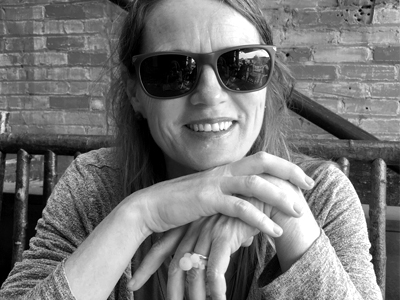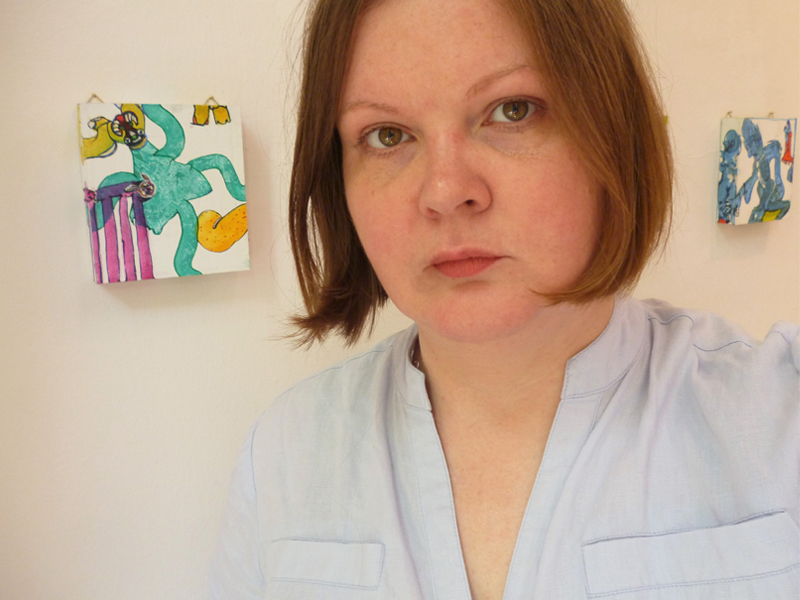
Galerie Katrin Eitner is located in Berlin, Germany and experiments with new ways to be a contemporary jewelry gallery in these times of great change. Her model is not focused on a brick-and-mortar location, which allows for flexibility and innovation. Katja Toporski asks gallerist Katrin Eitner about the impact of this decision as well as other projects she is involved in, including her role as one of the founders of the Juliane Noack Association.
Katja Toporski: You opened Galerie Katrin Eitner after an inaugural exhibition in Munich in 2014. Please tell us a little more about your background, including your relationship to contemporary art jewelry, and what led you to found Galerie Katrin Eitner.
Katrin Eitner: We exhibited Juliane Noack, Karl Wunderlich, Nicole Schuster, and Rahel Fiebelkorn in an exhibition room for five days during SCHMUCK, I still remember very well. I’m based in Berlin, where I live, but I do exhibitions and projects in other cities, too.
Before I started my first gallery project in 2011, I had worked for about 10 years in marketing and management. I was a marketing manager at a private university for a few years. And I had also done public relations, marketing, and fundraising for several nonprofit associations. But over the years I had the desire to work more in my original field of study, which was, among other things, art history. Well, what do you do when you have experience in art history and management? Found a gallery, of course!
But to answer your question from another point of view: Over the course of many years I learned about the various ways to name an object “jewelry” (in German, Schmuck) and what this could mean. I was fascinated by the diversity of one single term and I am fascinated to this day. From the bejeweled pieces at Grünes Gewölbe in Dresden, which I saw in my childhood, to the jewelry I developed in my university years; from the first jewelry pieces that I saw by Man Ray or Alexander Calder to my later discovery of the—well-hidden—scene of contemporary art jewelry. More and more it seemed natural to go into this field. It is a pleasure to work with artists as well as collectors and other partners. And it is often about showing people a new world. But I don’t only work in the contemporary art jewelry field–the main focus is three-dimensional art. This can mean sculpture and objects, too.
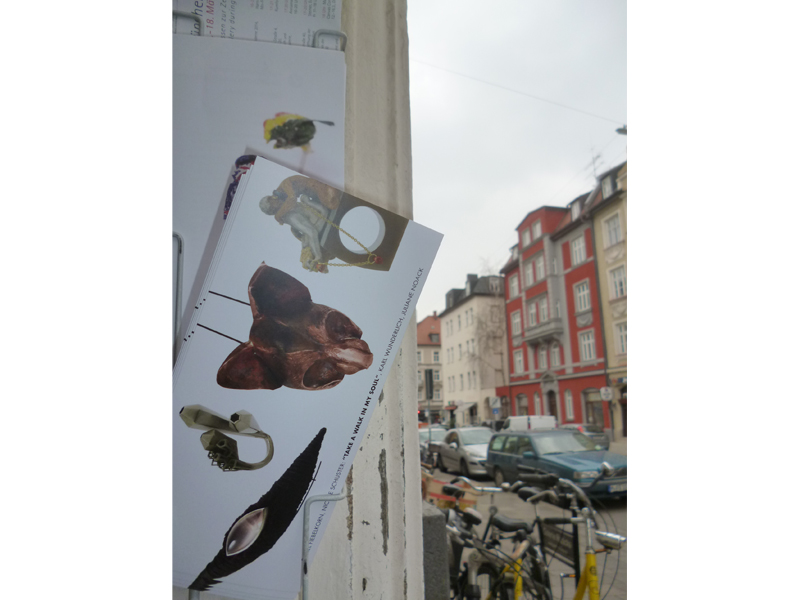
Your gallery is based in Berlin, and is described on your website as a pop-up gallery. Could you describe the kinds of spaces that you have exhibited in?
Katrin Eitner: For our initial show in Munich, we were in a former store from the early 20th century, now used as an exhibition room. In Berlin we also used an exhibition and project room several times. But the main work for me as a gallerist arises between the exhibitions. So I have my office in Berlin where artists, collectors, and partners can visit me. Although it’s not an exhibition space, it is possible to see pieces by appointment.
Is this mobility part of the gallery’s concept, or do you have any plans for a more permanent brick and mortar gallery?
Katrin Eitner: Never say never, but it’s part of the current concept. These are years full of changes. Artists, makers, gallerists, and customers or collectors are asking questions about what a gallery is or could and should be today and in the near future. Where is its place in a system formed by artists, collectors, gallerists, and a lot of other partners, too? We have seen it in the fine arts for several years, but it also takes place in the contemporary jewelry scene, of course. My current choice of a gallery office plus changing exhibition rooms is one possibility to play with new models of showing jewelry art and three-dimensional art, accompanying our artists, and bringing people together.
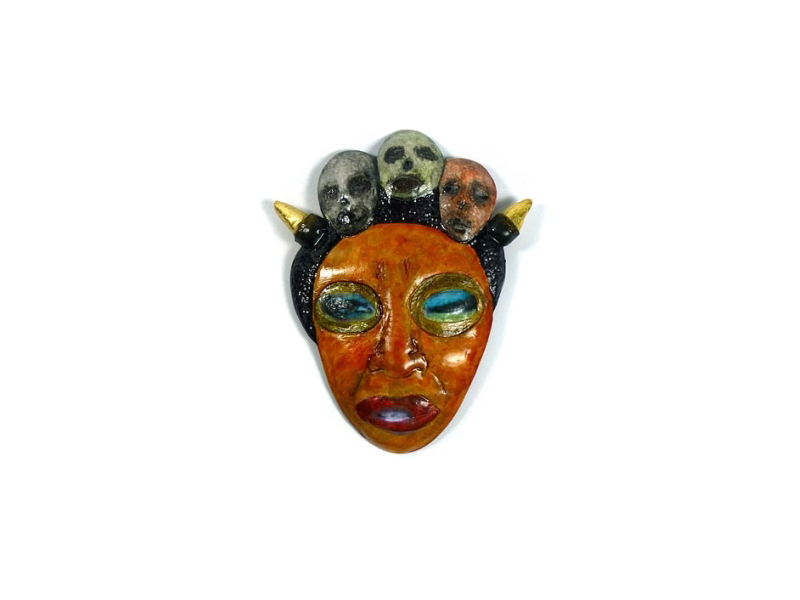
You specify that your interest lies with artists who take a figurative approach in their work. Please give us a little background for this, and how you see that this may change in the future.
Katrin Eitner: When I established the gallery and thought about the network of artists I knew, there were a lot of artists who take a figurative approach in their work. So it came really naturally. But on the other side I wanted to focus the gallery in some points. And that was one of them. Another point is to work mostly with artists who are now in their 30s or early 40s, with artists of my generation.
There are great positions of abstract jewelry and art in general. But I was really curious if the strong rise of figurative art positions in the fine arts and their success in the market over the last years would find its echo in the contemporary art jewelry scene. And it does!

Please tell us more about the artists you’ve shown in the past, and what exhibitions you’re planning in the future.
Katrin Eitner: Let’s start with Karl Wunderlich, a sculptor from Berlin (and a trained goldsmith as well) who is doing solely small bejewelled pieces of art jewelry. We started working together in 2011 and did his first solo exhibition, Out of the Rabbit Hole, in 2012 in Berlin. Now we’re working on ideas to show a new body of work. His special pieces of art are long-term projects, often worked out in old Renaissance techniques, but they’re combined with contemporary sculpture in miniature size. Again and again I’m deeply fascinated by how he’s able to chase a whole figure like a lion from a single sheet of metal. It often takes two to four months or even more. So only four to six pieces a year come into existence.
I’m really glad to have had the chance to work with Ulo Florack in an exhibition in 2015. I didn’t start with his jewelry pieces, but rather with his box objects in Smashed Investment on the Wall in Berlin, which included a hidden link to jewelry.
I exhibited Kathrin Borst, a 2010 graduate of Professor Daniel Kruger’s jewelry class at Burg Giebichenstein, University of Art and Design in Halle, Germany, in a group show in Berlin in 2015. Now we’re working together more closely, which is a lot of fun. I love the way she combines jewelry with the art of collage. And you definitely have to see the versos of her jewelry pieces! Last but not least, I started working with Juliane Noack in late 2013 with that first exhibition in Munich, which we spoke about at the beginning of the interview.
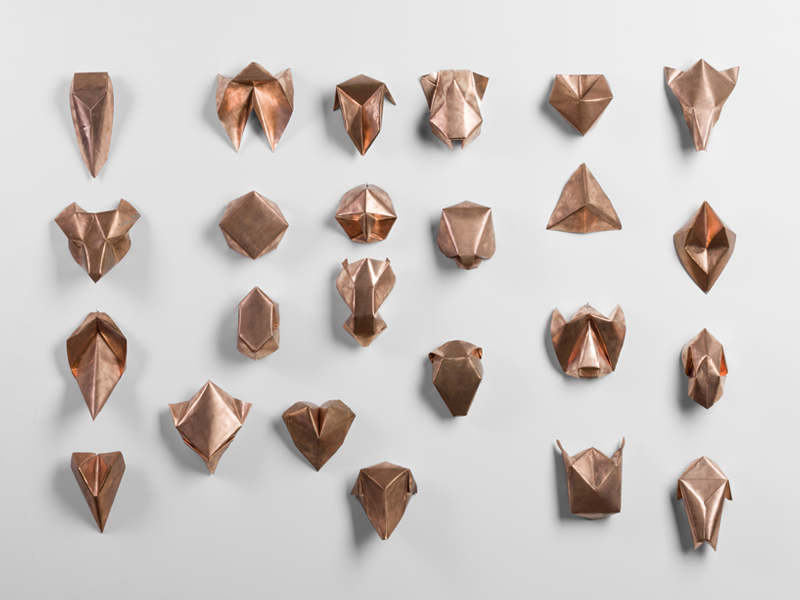
You represent the estate of Juliane Noack. Could you tell us more about this artist, and how your relationship with her came about?
Katrin Eitner: We met for the first time in 2013, just a year after she graduated from the jewelry class of Professor Daniel Kruger. We knew very quickly that working together was the perfect idea. She had made the first steps in her career as an artist: She received the Marzee Graduate Prize and a project grant from the Art Foundation of Saxony-Anhalt (Kunststiftung Sachsen-Anhalt). In this period her wall installation 24 came into existence: It consisted of 24 figurative or at times more abstract masks. It is a typical work and now a main piece in her short life. She had produced several masks before. In 2013 she decided to work it out as a wall installation. And some weeks and months later she worked on a series of mask necklaces. Making pieces of contemporary art jewelry was really important for her but it was never the only way to deal with a specific topic. She made sculptures, was a talent in drawing, and worked on her main themes—body, identity, and interaction or communication—in various fields of art. She was a founding member of the art and project room hr.fleischer e.V., in an abandoned newspaper kiosk in Halle. Once a year she gave haircuts in the booth or on the pavement in front of the kiosk. This body-related intervention, irritating in its dealing with the public space or the project room itself, was an invitation to communicate.
It’s tragic that we lost her so early, at the age of only 30, in the Germanwings crash of March 2015. We’ll never know what she might have done.
Since we worked together almost from the beginning, her family decided to allow me to manage the artistic estate. But the new focus now is to keep it together and to show the pieces in public.
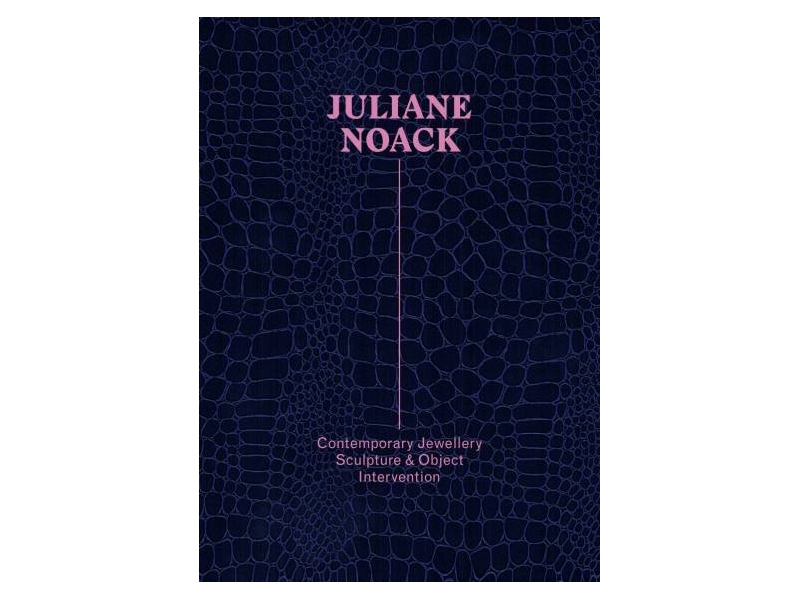
You also play a role as founder and board member of the Juliane Noack Association. What are the goals of this organization, and how specifically have those goals been implemented so far?
Katrin Eitner: Thank you for this question. We started the Juliane Noack Association (Förderverein zum Aufbau einer Juliane Noack Künstlerförderung e.V.) with family and friends of Juliane Noack in late autumn 2015, seven months after the terrible Germanwings incident, in her remembrance. The idea is to fund and support artists in their first years—like Juliane Noack—with project- and artist grants and support for catalogs, as well as travel costs. We focused on contemporary art jewelry, sculpture, and spatial interventions. These are the main fields in which Juliane Noack worked. We support artists living and working in Germany. Together with me on the board are David Nowak, Juliane Noack’s partner in life, and her father, Frank Noack. And we have a wonderful supporter circle. This is how we started, but we want to establish a “Juliane Noack Foundation” in the years to come.
We gave our latest exhibition funding to Attai Chen, Mielle Harvey, Carina Shoshtary, and Barbara Schrobenhauser for their exhibition A Barbarian, a Title & a Miracle during SCHMUCK Munich Jewelry Week 2017 in Munich. It was our very first open call. But we started our funding work just the year before with a production grant for an intervention in Halle and the portrait series With Jule, by Matthias Behne and Joerg Lipskoch, which is now part of the Juliane Noack catalog, to name only a few.
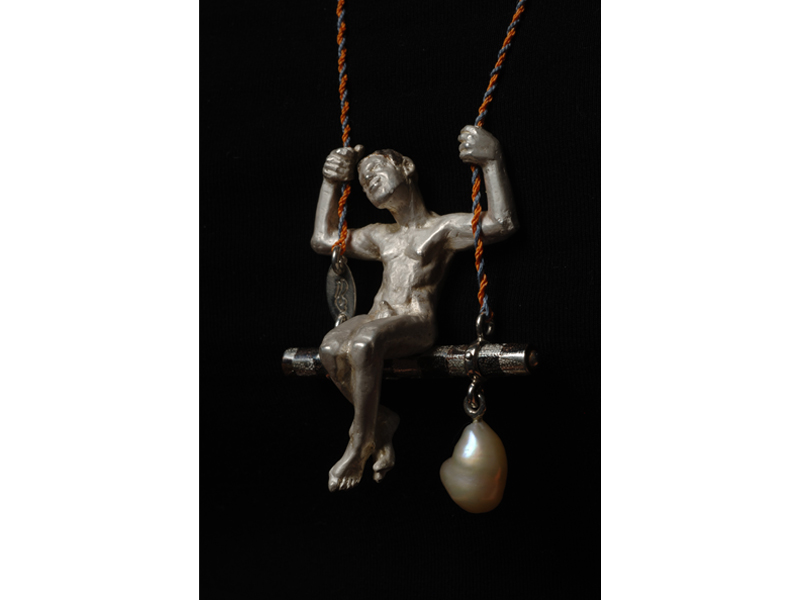
How do you promote the artists you represent outside of their exhibitions, and what strategies do you employ to spread the word about upcoming events?
Katrin Eitner: A lot of our “spreading the word” work is done online. That is the way of seeing things today for the first time (and in a very rapid way) mostly. But it’s also the way to invite people to come and see the jewelry pieces in person later. If it’s possible, of course, seeing as we also have international collectors. Instagram is an important application right at the moment. And in the future there will be new tools for sure. It’s not exactly about buying online, it’s about seeing, researching, and finding things online, to bookmark it or share it with your friends and community.
But in addition to that we make sure to have interesting invitation cards or exhibition materials or even a catalog, as for Karl Wunderlich or Juliane Noack.
My idea of being a gallerist is also to offer support for my artists concerning their website or social media appearance, but even more we talk about artist residencies, artist grants, or applications for an art or jewelry prize that fits their work. For this reason I work only with a few artists, but invite guests for collaborations or group shows.
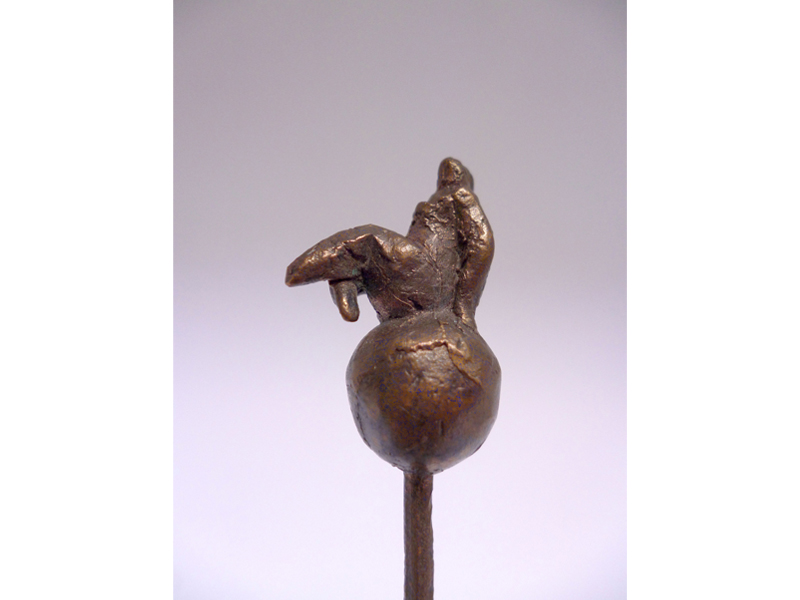
How would you place Galerie Eitner in the general art scene in Berlin? And what role do you see it play in the art jewelry world of Berlin?
Katrin Eitner: More than 500 galleries exist in Berlin. Not to forget the art and project rooms of the city. Berlin is more unfamiliar with contemporary art jewelry than Munich—there isn’t a jewelry class at the Berlin University of the Arts—which has a big impact. But of course the topic benefits from the vivid artist and gallery scene. And some jewelry artists living here the whole year or for some summer months. We have been doing our work since 2014, and besides me there are some others who have been in business much longer than me.
Maybe the perfect time for a first visit to Berlin could be the Gallery Weekend at the end of April, or Berlin Art Week in September. Just drop me a line!
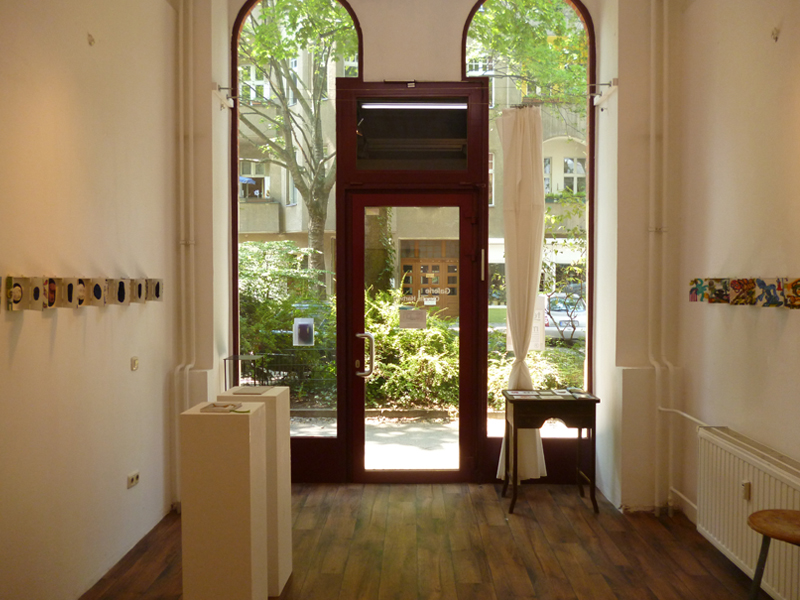
What books have you read lately that inspired you and that you’d like to share with AJF’s audience?
Katrin Eitner: Recently I found my old edition of Terry Pratchett’s The Carpet People, and it was great fun to read it during my regular high-speed train travels between Halle and Berlin. Additionally I like to have a look at the Rembrandt Bugatti: The Sculptor 1884–1916 catalog from time to time. He was the one who created the elephant for the Bugatti car. I saw the exhibition of his works here in Berlin in 2014.
